Hardware Specs
The specification listed below are designed to help you sort through the various technical decisions that are inevitably required when you buy a new computer. For convenience, we’ve listed every major component in a PC. We’ve also summarized what we think are the most important selection criteria associated with that component. Taken together, these specifications should be considered as an overview. We’ve also included detailed specifications for Netbooks, Ultra-portable Laptops, Midsize Laptops, Large-size Laptops, Tablets, Tower & Desktop PC’s, All-In-One Desktops and Small Form Factor PC’s. We encourage you to print out the specs before you begin shopping.
Processor(s):
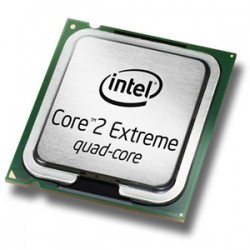
Selecting a Central Processing Unit (CPU) is all about speed. The more computations a processor can perform in a given segment of time, the more powerful it is. Processor speed is measured in Gigahertz (GHz). The higher the number the faster the chip. Faster is better. When selecting a processor, get the fastest you can afford since it’s highly unlikely that you’ll upgrade the processor during the computer’s lifetime. In other words, the decision you make now will likely be with you until you dispose of the computer at the end of it’s service life.
The processor market is currently dominated by two manufacturers: AMD and Intel. Both companies produce very high quality products. The processor market is extremely competitive. Processor specs typically change about twice a year. Today’s processor specifications will probably be outmoded in six months.
Until quite recently, most processor chips contained a single core (i.e. one computer on a single slice of silicone). In the last few years, both Intel and AMD have begun to market multi-core chips that contain two, four or more processors on a single slice of silicone. Multi-core processors are significantly more powerful then their single core predecessors.
Note: with the advent of multi-core processors, determining a computer’s actual speed has become somewhat problematic. A good rule of thumb is to multiply the processor’s clock speed (typically expressed in gigahertz – or GHz) by the number of processor cores to determine the computer’s “effective” speed. For example, if a computer’s clock speed was 1.5 gigahertz and the processor chip contains 2 cores, the computer’s effective speed is 3.0 gigahertz.
Motherboard & Bus:
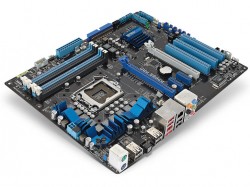
PCI-X (PCI Express) buses are currently the industry standard. PCI-X motherboards come in a wide variety of standard shapes and sizes. These sizes and shapes are called form factors. Computer cases are sized to match motherboard form factors..
Operating System:
Selecting the right operating system for your new PC is important because it establishes the foundation upon which all other software choices are made. Fortunately, there are many fine operating systems from which to choose. For instance, you can choose Apple Macintosh OS X which is a very well designed and powerful operating system. You can also choose Linux. Linux is what’s known as an open source operating system. Open source means that it was developed by software engineers who volunteered their time and effort to create the product. Linux is typically found on low end computers because it’s free, or on high-end, do-it-yourself systems favored by power users. There’s also Microsoft’s Windows operating system – the most popular operating system on the market. Windows can be found on 86% of all computers in the world. Currently, there are 3 different versions of Windows on the market (i.e. Windows XP, Windows Vista and Windows 7)
Even though Microsoft is only selling Windows 7 to the public, computer manufacturers are continuing to sell earlier versions of Windows to their customers..The reason is quite simple: the quality of Microsoft’s products have been spotty. Even though XP is old, it is highly reliable and still quite popular. Vista is only about 3 years old but it has a troubled history. Vista has been roundly criticized for being slow and buggy. Although Windows 7 has had mostly positive reviews since its release in late 2009, it’s still very new. Common wisdom among IT professionals is to wait at least 6 months after Microsoft launches a product before buying it. It usually takes that long for Microsoft to fix any glaring bugs, streamline the software so it runs faster and improve the overall reliability of the product. To Microsoft’s credit, they work very hard at fixing bugs and making improvements but it always takes a good bit of time to complete.
Both Vista and Windows 7 are available in the following versions:
- Starter
- Home Basic
- Home Premium
- Professional
- Enterprise
- Ultimate
With one exception (Windows 7 Starter) Microsoft sells both a 32 and 64 bit version of each Windows 7 product. The most important difference between 32 and 64 bit systems is the amount of RAM they can access. The 32 bit version of Windows 7 has an upper limit of 4 GB. The 64 bit version can access up to 192 GB of RAM depending on the product. Typically, the 64 bit version is only requested by power users and corporate customers who need the extra performance that access to extra RAM provides. The 32 bit version of Windows is quite adequate for most other consumers. By way of comparison, it should be noted that the current version of Mac OS X (Snow Leopard 10.6) is only available as a 64 bit operating system and is capable of supporting up to 16 TB of RAM. 1TB is a terabyte. 1TB equals 1,000GB. Hot stuff to be sure !!
Important Notes:
- At the time of this writing, some computer manufacturers are still selling Windows XP and Vista at a price that is well below Windows 7’s. New computers that have Windows XP or Vista installed typically come with a free upgrade to Windows 7. Some manufacturers are even offering a free downgrade from Windows 7 so customers can request which version of the operating system they want installed when they take delivery. This allows customers to upgrade to Windows 7 at a later date for free.
- Software made for 32 bit systems is generally compatible with 64 bit systems but the opposite is not true. Your choice of OS will impact the amount of RAM you can install in your new computer.
Memory:
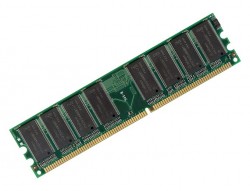
For the purpose of this discussion, the word “Memory” is synonymous with “Random Access Memory” (or RAM). RAM is measured in megabytes (MB) and gigabytes (GB). Gigabytes are bigger then Megabytes. All other considerations being equal, the more RAM your computer has, the faster it will run. As a general rule, buy as much memory as you can afford. Memory is cheap. Also bear in mind that it’s always getting cheaper and every computer nowadays can be easily upgraded as the need arises or as additional money becomes available.
Keep in mind that 32 bit operating systems can only use a maximum of 4 GB of RAM. 64 bit operating systems allow you to use more than 4GB of RAM. Depending on which 64 bit operating systems you select, you can theoretically use up to 16TB. Also keep in mind that many computers (especially laptops) use some of its RAM for graphics tasks. This so called “shared memory” could significantly slow down a computer. Once again, if you want to avoid any potential performance hit, it’s a good idea to buy as much RAM a you can afford.
Hard Drive(s):
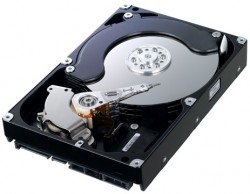
Hard drive designs are continuing to improve. Disk capacity and data retrieval speeds continue to go up while the price per gigabyte of memory continues to go down. The hard drive size on a typical entry level computer is currently about 150GB. The hard drive size on a typical mainstream computer system is about 250GB. The drive size on a typical performance computer is 500GB’s or more. At first blush, these sizes may seem extravagant and you may be tempted to downsize in an attempt to save yourself some money. As it turns out, the cost savings on a smaller unit evaporates when you factor in the labor and equipment costs associated with adding a larger disk in the future when you run out of space
When choosing a hard drive, faster is better than bigger. In other words, if you compare two identically sized hard discs, choose the one that spins faster. Faster rotations translates into better data retrieval rates. Economy hard drives spin at about 5400 rpm. Performance hard drives spin at 7200 rpm or faster. A word of caution to laptop users. High rpm disc drives tend to deplete battery charges quicker than slower spinning models.
Another important innovation in hard drive design is the introduction of the Solid State Drive (SSD). SSD’s are a type of Flash memory. They are becoming an increasingly popular option in ultra-portable laptops and tablets. They save weight and energy and they contribute to faster start-up times. However, they are currently far more expensive than traditional hard drives. In the near future, we should see SSD prices drop as their popularity increases.
Graphics Card(s):
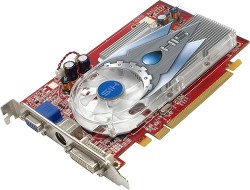
Most basic to mid-range laptops and desktops come with a built-in Graphics Processing Unit (GPU). These built-in GPU’s are often referred to as “integrated” graphics units. Machines with integrated components are difficult to upgrade since the electronics are built into the motherboard. Having no memory of their own, integrated graphics units have to share RAM with the CPU. If you buy a computer with integrated graphics, it’s a good idea invest in additional RAM.
High-end laptops and desktops typically have add-on graphics boards. These add-on graphics boards come with their own memory and are designed so extra memory can be added to the card at a later date.
Memory plays a key role in graphics refresh speeds. As a general rule, the more memory you have, the faster your graphics refresh rate will be. Most standard systems today have at least 256MB of memory (either VRAM or DRAM). Performance systems typically have at least 512MB of RAM
If you are going to do any graphics or rendering work, invest in a board that supports millions of colors (i.e. a board that displays objects in continuous – not dithered – tones).
Some high end desktop computers allow 2 graphics cards to be installed in the same box.
Some high-end laptops come equipped with a hybrid graphics system that uses both a built-in (integrated) set of graphic chips and an add-on (discrete) graphics card. Hybrid systems use the integrated subsystem for ordinary graphics tasks and the discrete subsystem for more demanding graphics tasks.
Sound System (Controller Card, Speakers & Audio Output):
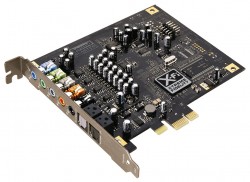
Most laptops and many desktops come with good quality audio electronic components built into the unit’s motherboard. This is known as an “integrated” sound card. For high-end systems, it’s common to insert an add-on sound card to over-ride the built in electronics. Add-on cards provide spectacular quality at a price. You should consider buying an add-on sound card if you produce multimedia presentations or are an avid gamer.
Most computers come with one or more built-in microphones; a built-in microphone jack; built-in mono or stereo speakers and a built-in headphone/speaker jack. The speaker jack can be used to plug in a set of external speakers. Once plugged in, external speakers over-ride any built-in speakers. Speaker selection is highly subjective. Shop around for a make and model that sounds good and fits your budget. Most computers on the market support what’s known as 5.1, 6.1 or 7.1 surround sound speaker systems. This refers to the quantity and configuration of the external speakers. For example, a 5.1 system requires 5 speakers and a sub-woofer.. A more practical and less costly approach are 2. 1 systems. These systems only require a pair of stereo speakers and a sub woofer.
Optical Drive(s):
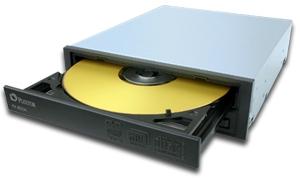
DVD drives are the current industry standard. DVD drives are backwards compatible with CD drives so its helpful to think of them as combo units (i.e. they read and write both types of disc). Manufacturers typically promote their products by highlighting the speed with which they read and write discs.
Blu-ray drives are available on high end laptops and desktops. Blu-ray drives are also backwards compatible so they can read and write DVD and CD discs.
Display:
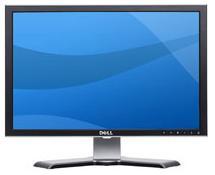
When it comes to selecting a monitor or laptop screen, reviewing equipment specifications doesn’t always lead you to a choice that you will be comfortable with over time. Image clarity, screen brightness and color rendition are subjective qualities that can only be judged by direct observation and side by side comparison. Be a smart shopper and stare at various brands and models before you make your selection.
With that said, here are some facts and figures to keep in mind. Flat screen LCD monitors are the norm. Screen sizes vary from about 9″ to more than 23″. Screen size is measured diagonally. You should match screen size to it’s intended use (i.e. gaming machines should not have small screens). As a rule of thumb, the bigger the monitor or laptop screen, the higher the cost. It is now commonplace for screens to be proportioned so they can comfortably display DVD movie images (i.e. wide-screen displays).
Netbook screen sizes vary from 9” to 12”. Screen size for ultra-portables (including tablets) range from 9” to 13”. Midsize laptops screen sizes vary from 14” to 16”. Large laptop screens are 17” or larger. Standalone screen sizes vary from about 15” (1024 x 768 resolution) to more than 29” (2560 x 1600 resolution). Current All-In-One screen sizes start at about 19” and go up to 27”. An increasing number of screens (especially All-In-Ones and Tablets) are touch sensitive.
Stand-alone monitors have very long service lives. In other words, if you buy a good monitor, it will probably outlast your computer. It ‘s becoming increasingly common for high-end desktops to have two or more monitors. It ‘s also common for docked laptops to have one or more stand-alone monitors as well.
Weight:
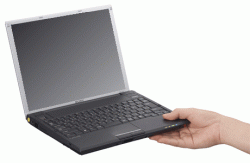
Weight is an important consideration when selecting an appropriate laptop. As a general rule of thumb, the smaller a laptop’s screen, the less it weighs. Ultra-portable laptops and Tablet PC’s typically weigh 4 pounds or less. Midsize laptops typically weigh between 4 and 7.5 pounds. Large size laptops typically weigh between 7.5 and 17 pounds.
When making a laptop purchase, you should consider the weight of the computer a well as the AC adapter, any external modules, and their cables. For instance, an ultra-portable laptop with all it’s accessories (e.g. AC adapter, external drives and spare battery) can weigh almost as much as a large size laptop.
Ports, Plugs & Slots:
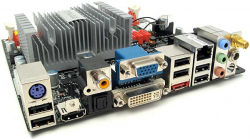
These ports, plugs and slots are commonly found on most laptops and desktops:
- One (1) parallel port
- Two (2) USB 2.0 ports
- One (1) FireWire (IEEE 1394) port
- One (1) or more Flash Memory card slots for removable media such as CompactFlash, Secure Digital, MultiMediaCard, Memory Stick, or Smart Media cards.
- One (1) Microphone jack
- One (1) Headphone jack
- One (1) VGA port
These ports, plugs and slots are becoming increasingly common on most laptops and desktops:
- Four (4) or more USB 2.0 ports
- One (1) Ethernet port (1GB)
- One (1) ExpressCard slot.
- One (1) Composite-In or RCA port
- One (1) Component Video-Out
- One (1) HDMI Video Out jack
- One (1) DVI Video Out jack
- One (1) Audio – Line In jack
- One (1) Audio – Line Out jack
These ports, plugs and slots are rarely available on most laptops and desktops:
- Serial ports
- PS/2 ports
- Infrared ports
- S-Video port
- PC Card slot
Communications:
Most laptops and many desktop computers have built-in modems. A Fax capable, V.90, 56 KB/sec modem is standard commercial quality. Many computers also come with built-in DSL modems. In addition to modems, most laptops and desktop computers also come equipped with one (1) Ethernet port as well as built-in WiFi and Bluetooth radios. A WiFi (also known as 802.11x) radio is essential if you want to plug your computer to a wireless network. It’s also becoming increasingly common for some business and high-end laptops to have wireless broadband (e.g. “EV-DO” or 3G) radios built-in as well.
Input Device(s):
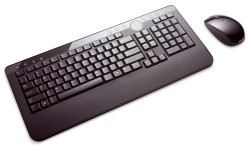
The catch word on Keyboards is try before you buy. Repetitive stress injuries are real and they can happen to you! Long term comfort is the most important selection criteria. If you make a mistake, keep in mind that keyboards are among the least expensive components in your system. They can be easily replaced if you don’t like the feel after a few weeks. For All-In-One PC’s and laptops with docking stations, a wireless keyboard is highly recommended.
Standard pointing devices for laptops typically include an eraser head or track pad. Mice are typically not included. They are considered optional extras. Selecting a mouse is another area where personal taste should dictate your selection. Technical specifications are not as important as physical comfort. For laptops, a wireless mouse is highly recommended.
Optional Equipment: Built-in web-cam
Note: prompted by the success of multi-touch smart phones, an increasing number of manufacturers are introducing multi-touch Tablets and All-In-One computers onto the market. It remains to be seen if these devices will become popular. If they do, our reliance on mice and keyboards will likely change significantly.
Battery Life (applies to Laptops only):
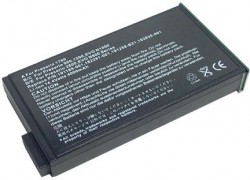
Battery life is an important consideration when selecting a laptop. Average laptop battery life is roughly 3.5 hours. Exceptional battery life is 7 hours. If you plan to spend a great deal of time traveling, it’s best to buy a second battery as a backup.
Bays:
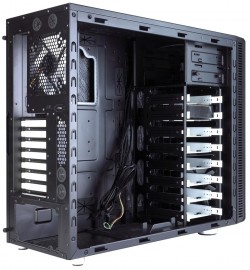
Large computer cases make it easy to swap out or add components. Cramped or tightly packed computer cases are difficult to add to or customize. This is true for both laptops and desktops. If you’re not planning on upgrading your computer after you make your purchase, a small size computer will probably suit your needs. If you are unsure about your future needs, buy a case with as many expansion bays or card slots a you can afford.
If you want to swap components or to add batteries to your laptop, select a unit with two or more bays. The more bays the better if you plan to reconfigure your laptop to suit different conditions.
For desktops and workstations, the number of bays for add-on equipment is a major differentiator between low and high end systems. Mid-range systems typically have 2 or more internal and 2 or more external bays that will allow you to add components to your system in the future.
Floppy Drive(s):
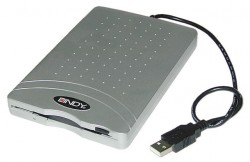
Floppy disks are obsolete. They are now considered optional equipment and are usually not included with computers any more. If you buy one, buy it with a “USB” connection.
Printers:
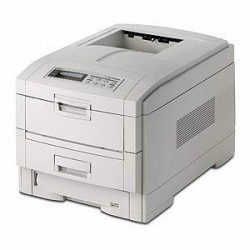
The sky’s the limit when it comes to selecting a printer for your computer system. Your choice depends on what capabilities you need and the money you have. Media (i.e. paper) size, image quality, cost per print and image longevity are key considerations in determining which technology best suits your needs. Low end color ink jet printers start at around $30. Low end laser printers start at around $400. Business class laser printers start at around $1500. Please note that the printer market is very competitive and prices change rapidly so bargain hunting is a must !
Backup Media:
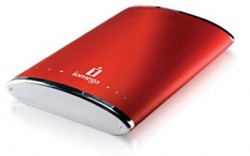
Although hard disks are becoming more and more reliable, they do occasionally crash. When they do, data contained on the hard disk is often destroyed. External or removable hard disks are a great way to backup your data. They are relatively cheep and well worth the investment. Internet back-up services are also available.
Surge Protector & Uninterrupted Power Supply (UPS):
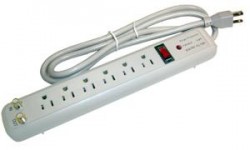
No system should be without a surge protector. If you’re really concerned about a potential loss of data due to a power outage, buy a UPS unit.
Security Cables & Dust Covers:
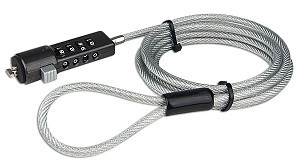
Buy ‘em if you think you need ‘em.
Workspace Layout & Design:
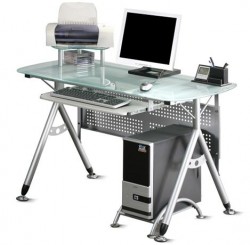 As you start shopping, try to envision where you’ll be putting your new equipment and how much space it will occupy. In addition to the computer itself, you’ll need room for all the normal things like printers, keyboards, mice and networking gear. If you plan to buy a laptop, be sure to include space for a docking station or port replicator. Also include space for peripherals or special gear (if any). Having a clear picture of how much space you have to work with can help you determine which form factor works best for you.
As you start shopping, try to envision where you’ll be putting your new equipment and how much space it will occupy. In addition to the computer itself, you’ll need room for all the normal things like printers, keyboards, mice and networking gear. If you plan to buy a laptop, be sure to include space for a docking station or port replicator. Also include space for peripherals or special gear (if any). Having a clear picture of how much space you have to work with can help you determine which form factor works best for you.
The location you choose should be well lit and glare free. It should also be well ventilated and close to electrical and data outlets. The furniture you select should be ergonomic and comfortable. Any table you select should include some kind of wire management system. For safety’s sake, it’s best to have wires tucked away but easily accessible.
